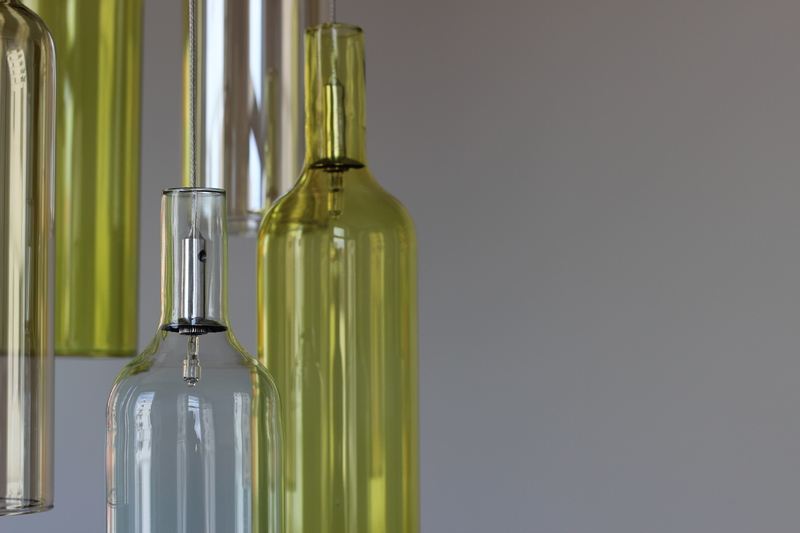Join the Green Movement by Responsibly Disposing of Pots and Pans
In today's environmentally conscious world, more people than ever are striving to reduce waste and adopt sustainable habits. One area that is sometimes overlooked is the proper disposal of kitchenware, especially old pots and pans. Join the green movement by responsibly disposing of pots and pans, making a meaningful difference for the planet and embracing a greener lifestyle. In this comprehensive guide, we'll explore why sustainable disposal matters, eco-friendly disposal methods, and innovative ideas to give your unwanted kitchen items a second life.

Why Responsible Disposal of Pots and Pans Matters
Many of us accumulate a collection of worn-out, scratched, or unused pots and pans over the years. While convenient, simply throwing these items in the trash can significantly harm the environment. Most cookware is made from a variety of materials--aluminum, stainless steel, nonstick coatings, and plastic handles--which don't easily break down in landfills. The improper disposal of old kitchenware leads to multiple issues:
- Landfill Overflow: Non-biodegradable pots and pans occupy space in landfills for generations.
- Resource Waste: Metals and materials used in cookware can often be recycled and reused, conserving raw resources.
- Harmful Chemicals: Certain nonstick coatings, if burned or degraded, can release toxic fumes or chemicals into the environment.
- Missed Opportunities for Charitable Giving: Usable kitchenware can benefit shelters or low-income families if donated instead of discarded.
Making the responsible choice in getting rid of pots and pans can reduce your environmental footprint, conserve resources, and even help those in need.
Eco-Friendly Ways to Get Rid of Unwanted Pots and Pans
Not all cookware has the same end-of-life journey, but there are several eco-friendly methods for disposing of old pots and pans. Here are the top strategies to ensure your unwanted kitchenware finds a new purpose without harming the planet.
1. Recycling Old Pots and Pans
Recycling is one of the best ways to safely and sustainably dispose of metal pots and pans. Most local recycling centers accept metal cookware, but there are some key considerations:
- Separation of Materials: Remove any plastic, silicone, or wooden handles and non-metal parts if possible.
- Call Ahead: Not all facilities accept nonstick or coated pans. Contact your local recycling facility to learn about their requirements.
- Preparation: Rinse cookware to remove any leftover food or grease before recycling.
*Tip: Some companies and specialty scrap metal yards may offer drop-off programs for old cookware, including stainless steel and cast iron pots or pans. Ask about their policies regarding nonstick coatings or mixed materials.
2. Donating Cookware in Good Condition
If your pots and pans are still functional, but you simply don't need them or want to upgrade, consider donating them to those in need. Many charitable organizations and thrift shops accept gently used kitchenware.
- Charity Stores: Organizations like Goodwill, Salvation Army, and Habitat for Humanity ReStores often accept cookware donations.
- Shelters and Soup Kitchens: Homeless shelters, transitional housing, and community kitchens are frequently in need of basic cookware.
- Community Freecycle or Buy Nothing Groups: Offering your old pots and pans online for free can quickly connect you to someone who needs them.
Reminder: Only donate items that are clean, safe to use, and in decent working condition.
3. Repurposing and Upcycling Old Pots and Pans
For crafty or eco-conscious individuals, repurposing your cookware is a creative way to join the green movement. Transform unusable or outdated pots and pans into something new and useful for your home or garden.
- Planters: Drill drainage holes and use pans or pots as quirky outdoor plant containers.
- Wall Art: Paint and hang old pans to create unique kitchen art.
- Organizer: Use deep pots to store utensils, tools, or crafting supplies.
- Birdbaths or Feeders: Turn large pots into rustic birdbaths for your backyard.
Upcycling keeps items out of the landfill and adds charm and character to your living spaces. Challenge yourself to see the potential in old cookware!
4. Manufacturer Take-Back and Trade-In Programs
Some cookware brands offer take-back or trade-in programs as part of their commitment to sustainability. For example:
- GreenPan: Offers special recycling instructions for their products.
- Calphalon: Occasionally runs trade-in promotions for old cookware in exchange for discounts on new products.
- Local Kitchenware Retailers: Some stores have recycling drop boxes or will direct you to proper disposal options.
Check manufacturer websites or contact customer service to explore these opportunities.
Key Considerations Before Disposing of Cookware
_Disposing of old pots and pans responsibly starts with understanding the materials involved and the options available in your local community._ Here are some important steps to ensure environmentally friendly disposal:
- Type of Cookware: Identify whether your pots and pans are nonstick, cast iron, stainless steel, copper, aluminum, or have plastic components.
- Condition: Is the item usable, damaged but repairable, or beyond salvaging?
- Local Policies: Research recycling center guidelines and community programs.
By taking a few extra minutes to assess your cookware's end-of-life journey, you'll make a much greater positive impact.
Frequently Asked Questions on Green Disposal of Pots and Pans
Can I Put Pots and Pans in the Curbside Recycling Bin?
Generally, you should not place pots and pans in your curbside recycling bin. Home recycling programs typically do not accept large metal items or anything containing mixed materials. Take these items to a local recycling facility or scrap metal yard that specifically accepts them.
How Do I Know if My Cookware Is Recyclable?
Most metal cookware (stainless steel, aluminum, cast iron, copper) is recyclable, while nonstick coatings, glass lids, or plastic parts may require special handling. Contact your local center for guidance.
What Should I Do with Broken Nonstick Pans?
Nonstick coatings, especially older versions, can complicate recycling. Check with the manufacturer or recycling facility for disposal instructions. If donation or repair isn't possible, separate handles or plastic parts and recycle only the metal where accepted.
Are There Any Eco-Friendly Brands That Accept Old Cookware?
Yes! Certain eco-conscious cookware brands run trade-in or recycling programs. Always check with the brand or retailer when purchasing new pots and pans to see if they offer green disposal solutions.
Creative Ways to Give Old Pots and Pans a Second Life
If you enjoy DIY projects or sustainable home decor, transforming your old pots and pans can be both fun and practical. Here are some inventive, eco-friendly ideas:
- Tiered Storage: Attach smaller pans to a board to create a tiered hanging storage system for spices, fruits, or vegetables in your kitchen.
- Garden Features: Paint and repurpose large saucepans as whimsical birdhouses, herb planters, or garden fixtures.
- Children's Play Items: Provide safe, clean pots and pans for children's imaginative playsets.
- Clock or Mirror Frame: Use a saute pan as a unique frame for a clock or wall mirror.
*Always clean, sand, and remove sharp edges before repurposing old cookware for decorative or play uses.*
Start a Community Cookware Swap or Recycling Drive
Taking local action can amplify your impact and inspire others to join the green movement through responsible pots and pans disposal. Here's how to get started:
- Host a Cookware Swap: Organize a community event where neighbors can exchange gently used kitchenware before purchasing new items.
- Partner with Charities: Collect and donate surplus cookware to shelters, food banks, or refugee programs.
- Arrange a Group Recycling Drop-Off: Coordinate with local recycling centers or scrap yards to accept bulk kitchenware from your neighborhood.
- Educate and Spread Awareness: Share tips online or in community newsletters on eco-friendly cookware disposal.
By working together, communities can dramatically reduce landfill waste and strengthen a culture of sustainability.

Benefits of Joining the Green Movement for Cookware Disposal
Taking steps to responsibly dispose of your old pots and pans yields a host of benefits, including:
- Environmental Preservation: Fewer items in landfills and lower demand for raw material extraction.
- Resource Conservation: Recycled metals and materials support manufacturing processes with less environmental impact.
- Community Support: Donating usable cookware helps those who can't afford new kitchenware.
- Personal Satisfaction: Knowing you've made a responsible choice for the planet and future generations.
Join the eco-conscious movement and make every action count, starting right in your kitchen!
Conclusion: Take the Next Step Toward Sustainability
By choosing to responsibly dispose of pots and pans, you're embracing an essential aspect of green living. Whether you donate, recycle, repurpose, or facilitate community action, every effort helps reduce waste and benefit the environment. The next time you clean out your kitchen cabinets, remember--you can make a difference. Join the green movement today and inspire others to do the same!
Looking for more sustainability tips? Explore local environmental groups, attend recycling workshops, and stay informed about new recycling and upcycling trends. Your actions matter--let's build a cleaner, greener world together!
```